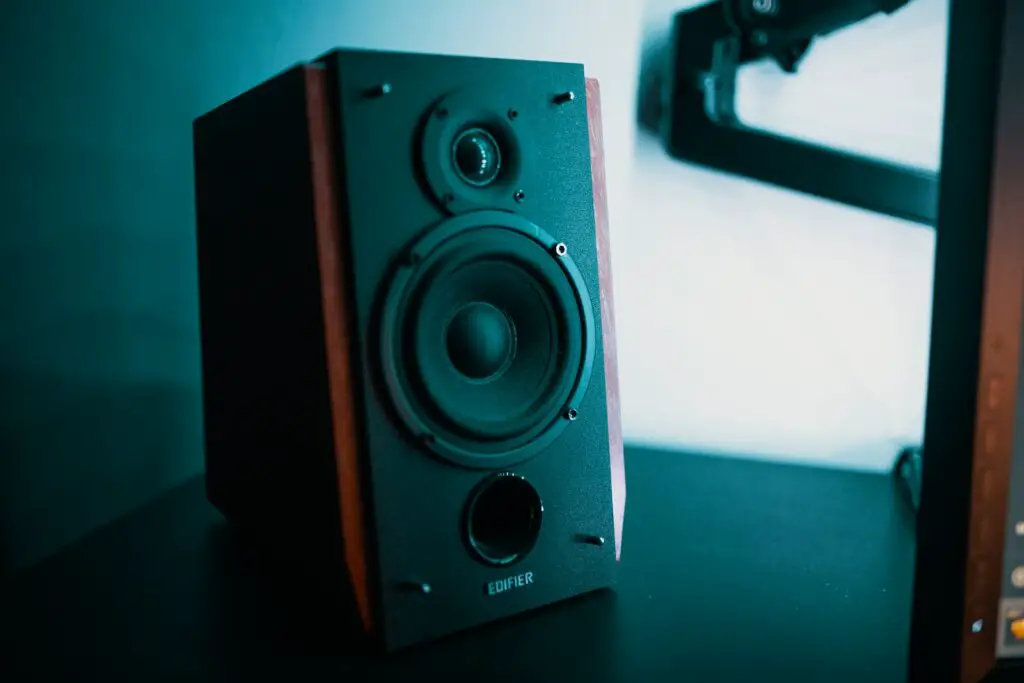Speakers are essential in any audio system, from home theater setups and car stereos to musical instrument amplifiers.
Their primary role is to convert electrical signals into audible sound waves.
Each type of speaker has its own features and characteristics that enable it to handle different frequencies and provide specific and the best audio experiences to its listeners.
Midbass speakers, also called mid-woofers, is a popular choice due to its characteristics and best features which allow it to handle low bass frequencies more effectively.
They deliver audio waves between 200Hz and 500Hz frequency range, making them essential components of any sound system.
Frequency Range: Midbass speakers typically cover the frequency range from 100 Hz to 500 Hz, which lies between sub-bass and midrange frequencies.
Features Of Mid Bass Speakers
Cone Size
Midbass speakers typically feature cone sizes ranging from 6 inches to 8 inches in diameter, with larger models providing more bass response.
Sensitivity
Midbass speakers usually have a sensitivity range between 85 and 95dB, indicating the loudness level they can achieve per watt of power input received.
Power Handling Capacity
The power handling capacity of a midbass speaker refers to how much energy it can handle before becoming damaged or distorted.
These speakers typically have power handling capacities ranging from 50 watts up to 200 watts.
Impedance
Impedance refers to the electrical resistance of a speaker. Midbass speakers typically have an impedance of 4 ohms, though some models may have higher or lower values.
Cone Material
Midbass speaker cone material can be composed of various materials, such as paper, polypropylene and Kevlar.
Each material has its own characteristics which influence sound quality when playing music.
Benefits Of Utilizing A Mid Bass Speaker
- Midbass frequencies are more directional than bass frequencies produced by subwoofers.
- Using a dedicated midbass speaker takes the burden off the midrange speaker, improving sound quality without straining power handling.
- Modifying amplification between midbass and midrange frequencies with a dedicated midbass driver prevents distortion and improves sound quality.
- Midbass speakers are helpful in higher power applications where demands of midbass sounds cannot be met by high-powered subwoofers alone.
- A dedicated midbass woofer provides constant and sufficient bass for all media, allowing increased bass volume without interfering with midbass frequencies.
What Is The Optimal Placement For Mid-Bass Speakers?
For optimizing mid-bass performance, one of the most significant factor to keep in mind is the distance between left and right speakers
Positioning them closer together will enhance mid-bass coupling as sound waves from each speaker can reinforce and complement one another for a more cohesive, balanced soundscape. Another crucial consideration when selecting speakers for the home is their position relative to the front wall.
While it may be tempting to place them directly against the wall for convenience, doing so can have an adverse effect on mid-bass performance.
When speakers are too close together, their sound waves bounce back, leading to distortion and muddiness in the midrange range.
Giving the speakers more room to breathe and produce sound waves without interference from walls can give you a larger and more natural soundstage – especially for music that relies heavily on mid-bass frequencies.
What Type Of Sound Is Produced By Mid Bass Speakers?
Midbass produces a warm, full, round sound that can fill rooms and give music depth.
When well balanced with other frequencies in a sound system, midbass can create an enjoyable listening experience.
However, if it is overpowering or not balanced correctly with other frequencies, it may lead to a muddy or boomy tone unpleasant for listeners.
Midbass is an integral part of music that adds depth and impact. When balanced correctly, it can significantly enhance listening experiences.
What Are The Drawbacks of Mid Bass Speakers?
One of the drawbacks of Mid Bass speakers is that they come with limited frequency range.
Another common drawback of midbass speakers is their incapability to handle high volumes without producing poor sound quality.
It is often necessary to pair midbass speakers with other types of speakers to achieve a full spectrum of sound.
When stretched beyond their limits, midbass speakers may experience distortion and loss of clarity, particularly in higher frequencies.
This can be discouraging for music listeners who enjoy listening at loud volumes.
Which is Better; Midrange vs Midbass Speaker?
When it comes to sound quality, it’s ultimately up to your ears to decide which type of speaker is better.
Different speakers have a varying sound quality and are designed for different types of music. Combining multiple speakers specializing in different frequency ranges can result in fuller sound reproduction than using a single speaker.
Midrange speakers are essential for those upgrading their sound system, often used as part of full-range speakers that include a subwoofer and tweeter for surround sound systems.
Meanwhile, midbass speakers are popular among music enthusiasts looking to add depth and impact to their sound.
If you want to boost the low-level thump, consider adding a dedicated midbass speaker and another for the midrange.
How Mid Bass Speakers differ from Mid Range Speakers?
Frequency Range
Midbass speakers have a limited frequency range, meaning they cannot reproduce the highest frequencies in music.
On the other hand, midrange speakers boast a wider frequency response and can easily reproduce those same highs.
Sound Quality
Midbass speakers may produce poor sound quality when played at high volumes due to their inability to handle higher music frequencies.
Conversely, midrange speakers are designed for this purpose and can handle higher frequencies without distortion.
Size
Midbass speakers tend to be smaller than their midrange counterparts, making them a better fit for mounting on door panels or rear decks.
How Can I Determine If My Speakers Are Suitable For Producing Good Bass?
Although the human ear can technically detect sound frequencies between 20Hz and 20kHz, it is commonly understood that bass frequencies below 30Hz are more felt than heard.
As a result, a speaker capable of producing frequencies down to 50Hz or lower is generally considered good in terms of bass reproduction.
A subwoofer is typically only necessary to hear extremely deep bass frequencies that may not be achievable with the speakers alone.





